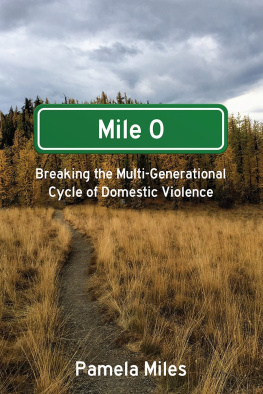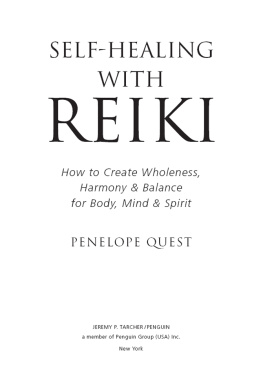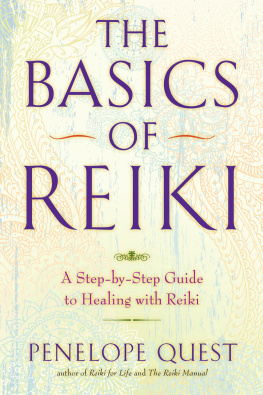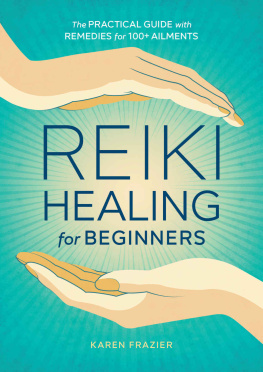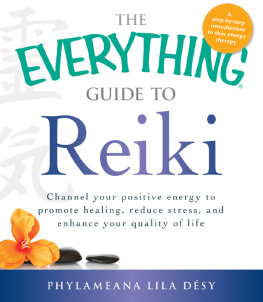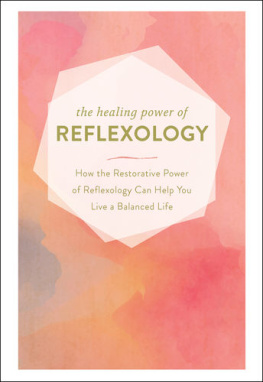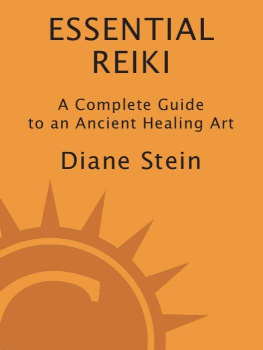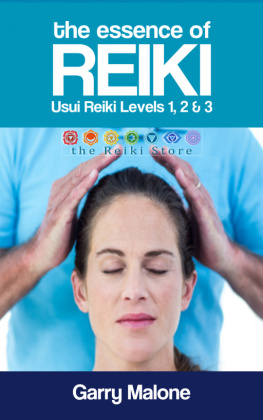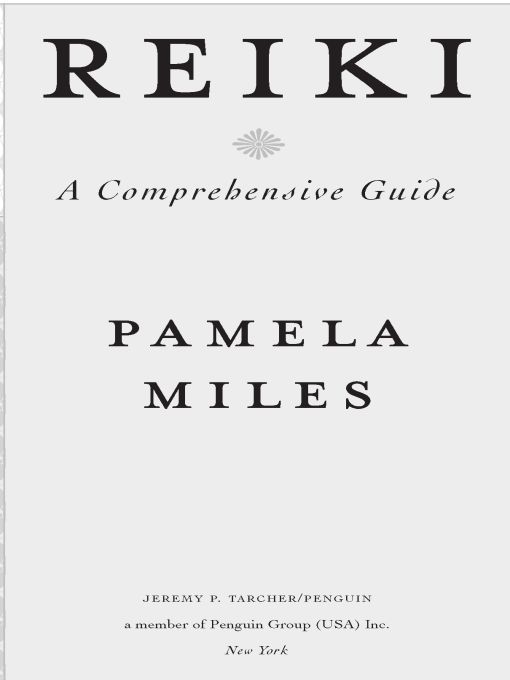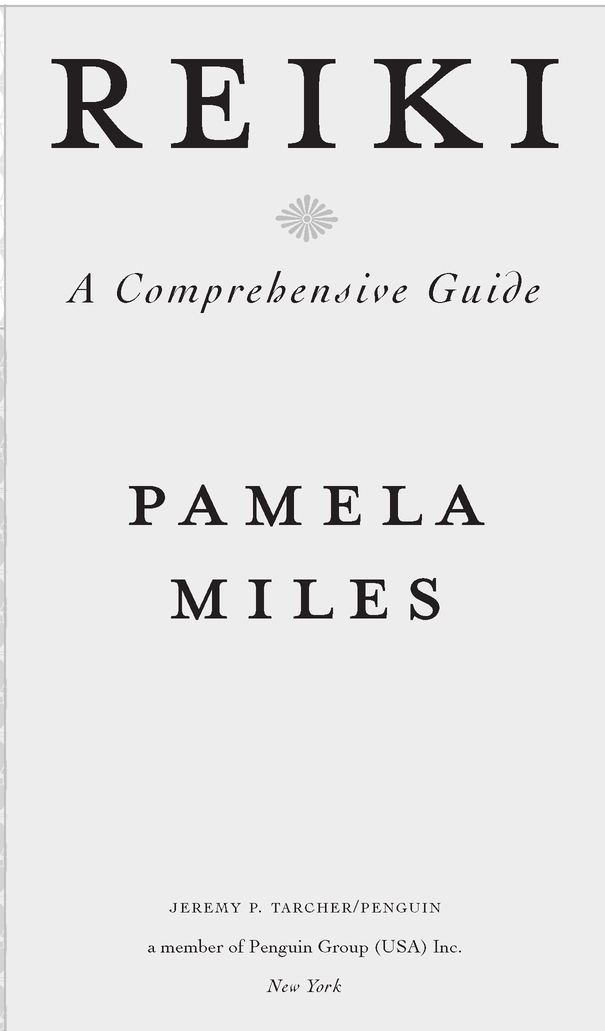Table of Contents
To my mother
and to all who seek to
nourish and to serve
ACKNOWLEDGMENTS
Writing a book is a study in contrasts, a process both solitary and collaborative, and, in this case, one with a long story of its own. I have more people to thank than pages on which to do it. To each of you who have supported Reiki and this project by sharing your Reiki stories, explaining your work, making introductions, and generally giving encouragement: We both know who you are. I remember you often, with warm gratitude. Thank you to my clients and students for sharing yourselves, your insights, and your experiences. And a special thank-you to the many scientists who generously and patiently explained your work to me, even though many of you had never heard of Reiki. Your contribution has been invaluable to the development of this book and to my continuing education.
Speaking with friends and colleagues in both conventional health care and traditional healing arts and spirituality is not only a delightful way to spend time, but a treasured source of stimulation and education. Heartfelt thanks to Robert Abramson, M.D., M.Ac.; Kausthub Desikachar; Sally (Durgananda) Kempton; Robert Schmehr, CSW; Albert Kuperman, Ph.D.; Larry Dossey, M.D.; Lewis Mehl-Madrona, M.D., Ph.D.; Master Yu Wen Ru; Do-Hyun Choe, OMD; Injae Choe, LMT; Carol Davis, Ph.D.; Danna Doyle Park, M.D.; Donna Eden; David Feinstein, Ph.D.; David Riley, M.D.; Bert Petersen, M.D.; John Friend; Vasant Lad; Lokendra Singh; Kenneth Cohen; Kumiko Kanayama; David Crow, L.Ac.; Pankaj Naram; Simon Taffler; Rubin Naiman, Ph.D.; Melinda Mingus, M.D.; Leslie Kaminoff; Michael Cohen, Esq.; Joel Friedman, M.D., Ph.D.; and Lawrence Palevsky, M.D. Special thanks to Andrew Weil, M.D., for your support of subtle healing therapies and your leadership in both medical and consumer education.
The ongoing conversation with my Reiki colleagues continually inspires me and moves my understanding to greater clarity and refinement. Huge thanks to Barbara McDaniel; Robert Fueston, L.Ac.; Paul Prakash Dennis; Linda Keiser Mardis; Wendy Miner, LMT.; Elaine Abrams; and Nancy Eos, M.D.
Thank you to my colleagues who learned Reiki from Hawayo Takata and carry her work forth with such commitment, devotion, and humility: Wanja Twan, Paul Mitchell, Susan Mitchell, Rick Bockner, Anneli Twan, and Chelsea Van Koughnett.
I extend deep gratitude to my esteemed Japanese colleagues, Reiki masters Hyakuten Inamoto and Hiroshi Doi, for your availability and patience as I tested the accuracy of my information and the subtlety of my understanding, and to Toshihiko Murata for your gracious translation and perceptive dialogue. Thank you, Phyllis Lei Furumoto, for your kind permission to include the photos of Mikao Usui, Chujiro Hayashi, and your grandmother, Hawayo Takata.
The vision of two key people moved this book from dream to reality: my agent, Stephanie Kip Rostan, and the publisher of Tarcher, Joel Fotinos. My editor, Ashley Shelby, extended herself far beyond the call of duty to craft the manuscript, and deftly coordinated Tarchers stellar Team Reiki: managing editor Amy Brosey, designer Meighan Cavanaugh, jacket designer Lee Fukui, and copy editors Barbara Grenquist and Anna Jardine. And thank you, Retsu Takahashi, for your commitment and care in illustrating the hand placements.
As the manuscript developed, I pressed colleagues and friends for edit after edit after edit. For your dialogue, your indulgence, your thoughtful perspective that shaped this manuscript, and your love of the practice, I thank Sheldon Lewis; Susie Kessler; Michael Gnatt, M.D.; Sezelle Haddon, M.D.; Ben Kligler, M.D.; Indrani Weber; Judith Jacobson, Ph.D.; Tess Nakamura; Sheila Lewis; and MaryAnn Zitka. And thank you to Rosemarie Turk, Philip Baloun, Nurit Spector, Dafna Schmerin, and the remaining members of the board of the Institute for the Advancement of Complementary Therapies (I*ACT), Norman Solovay, Mackie Davis, and Alma Montclair, for your friendship and support.
Throughout my life, I have been tremendously fortunate to be mentored by accomplished teachers of many wisdom traditions: you have all left your vibration in my heart. Many years ago, Lama Thubten Yeshe and Lama Zopa Rinpoche provided my first glimpse of living compassion. More recently, His Holiness Orygen Kusum Lingpa has immeasurably deepened my understanding of healing and spirituality. The teachings and Healing Chod offered by Dungse Rigdzin Dorje Rinpoche and the lamas and nuns of Zangdokpalri Monastery have been a source of profound support and a reminder of the connection between healing and self-determination.
This book could never have happened without the blessings, teachings, and unfailing example of the Siddha Yoga lineage of meditation masters, Gurumayi Chidvilasanda, Swami Muktananda, and Bhagawan Nityananda, who continually reveal to me the sweet transformation that comes with practice and grace.
To my children, Eric and Hannah Grace: You are, alas, children no longer. Thank you for the inspiration and sheer delight of being your mother.
FOREWORD
Reiki is a system of healing and spiritual development that has enjoyed substantial popularity and success worldwide. With that popularity have come some challenges that this book ably addresses through an informed historical, clinical, and scientific perspective and a mature vision for Reikis continuing evolution. Originating in Japan nearly a century ago, the practice has been taught to millions of people. But, like many Western transplants from Eastern traditions, it has become seriously diluted at its most popularized fringes, with large numbers of individuals, for instance, becoming Reiki masters after three weekends of training or less.
Miles makes a vivid case that Reiki is well worth liberating from these devolving standards, not through increased regulation, but through deepened understanding. At the most basic level, she recounts how physicians she has trained report that hands-on Reiki bridges the gap that can exist between touch that is investigative and touch that is therapeutic. The approach reacquaints us, in our high-tech/low-touch society, with the healing power of loving, supportive, nonsexual physical contact and offers a graceful context for offering it. At the most profound level, as conventional medicine wrestles with the implications of the convergences among quantum physics, superstring theory (vibration is everything), and frontier topics in biomedical research such as cell regeneration and the human biofield, Reiki may be way ahead of the curve in showing how the emerging paradigm can be applied in health-care settings and for self-healing.
The fundamentals of Reiki can indeed be transmitted in as little as eight to ten hours. That is among Reikis greatest strengths. People can be practicing it on themselves and their friends after a weekend class or short series of evening sessions. And they can do this responsibly. A Reiki session is at least as safe as a gentle massage. If people can practice Reiki responsibly and safely after just a brief course, the next question is, Does it work? What can actually be delivered after only a days training in a practice whose advocates claim has such breadth and depth?
My background is in energy medicine. I teach my students to assess energy imbalances systematically and to intervene actively. The path taken in Reiki is more receptive than active, more like meditation than medicine. Reiki is generally associated with nonspecific benefitssuch as deep relaxation, stress reduction, more restful sleep, enhanced immune functioning, greater peace, and increased self-awarenessrather than with the treatment of specific illnesses (though these nonspecific benefits can have a strong impact on an illness). While these benefits can be attributed to features common to any healing modality, such as the practitioners caring or the recipients hunger for touch or belief that something positive is about to happen, Miles makes the case that something more profound is occurring.


